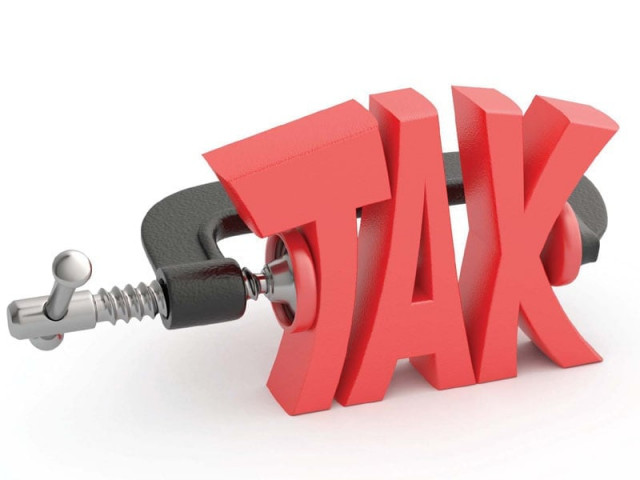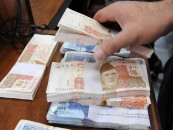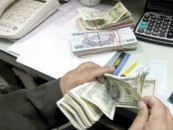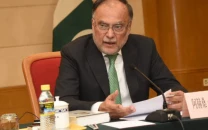Tax reforms: a re-election strategy?
Lower taxes on salaried individuals can tilt poll outcome in favour of policymakers

Yes, although not fully implemented except during the tenure of former Finance Minister Miftah Ismail, there are strong reasons to believe that reducing taxes on salaried individuals could generate enough political support to tilt election outcomes in favour of policymakers. Ultimately, isn't that what they aim for?
Last week, India's Finance Minister, Nirmala Sitharaman, unveiled the country's budget under pressure from politicians and investors to sustain growth. A major highlight that won public support for the Bharatiya Janata Party (BJP) was the significant reduction in tax rates for the middle class, with increased exemption limits for lower- and middle-income earners.
In contrast, Pakistan, under the pretext of International Monetary Fund (IMF) policies, continues to put extraordinary burdens on its shrinking salaried, lower-to-middle urban class. This segment is unfairly penalised for being part of the formal sector, while the government attempts to recover losses from colossal economic mismanagement, weak enforcement, and the protection of traders, real estate, and agriculture as untouchable sectors. Efforts to tax traders and agriculture have so far failed despite some superficial progress, while the real estate sector remains a mixed bag of benefits and drawbacks.
To compare, someone earning $2,000 per month (Rs550,000) in Pakistan faces a 35% marginal tax rate, whereas their counterparts in India, the US, and Bangladesh pay 25%, 22%, and 20%, respectively. Similarly, a person earning $3,000 per month (Rs800,000) pays 37% in Pakistan, compared to 25%, 22%, and 25% in those countries. Progressive economies like Vietnam and Hong Kong have even lower tax rates.
Without delving into the debate of what taxpayers are meant to receive in returnsuch as free education, healthcare, security, and infrastructureit is reasonable to tax the salaried class. In the US, nearly 50% of federal revenue comes from individual taxes (direct taxes). This is despite lower tax rates. Ironically, Pakistan's middle-to-upper-class incomes would be considered minimum wage in certain US states and by some employers.
The need is for a fair taxation system. Pakistan has overly relied on indirect taxes like sales tax, customs duties, and excise taxes while ignoring the vast black economy that thrives in agriculture, trade, wholesale, retail, blue-collar services, and real estate. The high cash circulation in these sectors is proof of widespread tax evasion. This imbalance significantly hinders Pakistan's progress.
By 2047, on its 100th birthday, Pakistan will be the world's third most populous country. With no real efforts toward population control, the country will need a robust private sector to create enough jobs for its youth. Overburdening formal industries, services, and corporate employees with excessive taxes while neglecting the real economic challenges is not a sustainable strategy.
If this year's budget provides a clear direction to reduce corporate and salary taxes by 1% annually for the next nine years, and the government remains committed to this plan, it would boost purchasing power, leading to increased domestic consumption and GDP growth. Simultaneously, this would pressure the government to generate 20-30% annual revenue growth from traders, wholesalers, retailers, and real estate, ensuring their contribution aligns with a fair share of GDP.
Adopting such a tax policy could drastically shift electoral odds in favour of the ruling party. Policymakers seek re-electionso why not earn it? Politicians must integrate the urban salaried class into their policies, as this segment will dominate in a few decades due to declining agricultural employment.
The World Bank has already stated that with Pakistan's dismal investment-to-GDP ratio, the economy cannot grow beyond 3-4%. A new perspective is needed. Last year alone, losses from PESCO, LESCO, QESCO, and SEPCO amounted to Rs96 billion, Rs48 billion, Rs38 billion, and Rs29 billion, respectively. These four companies contributed Rs210 billion in losses, while Rs368 billion was collected in salary taxes. If these entities had been breaking even, tax rates could have been slashed in half. How naive of us to wish for such reforms.
THE WRITER IS AN INDEPENDENT ECONOMIC ANALYST



















COMMENTS
Comments are moderated and generally will be posted if they are on-topic and not abusive.
For more information, please see our Comments FAQ